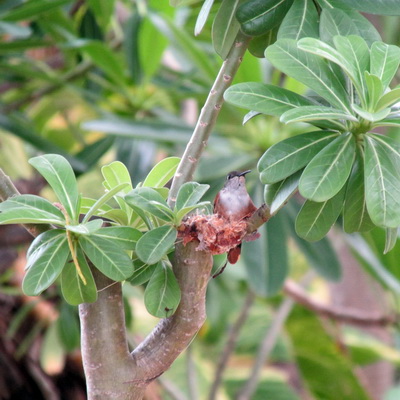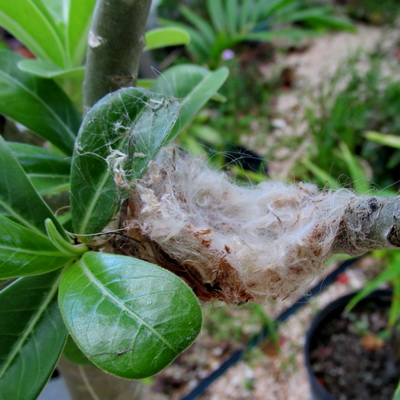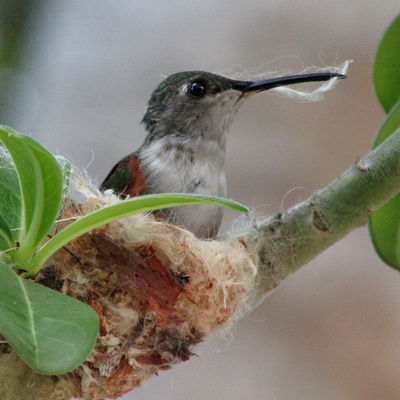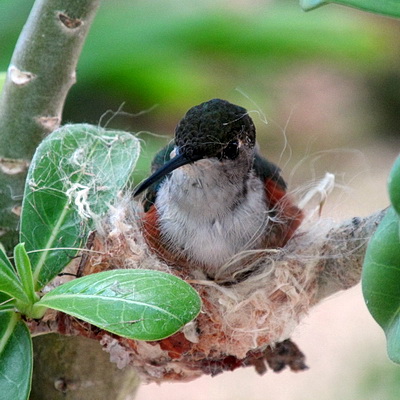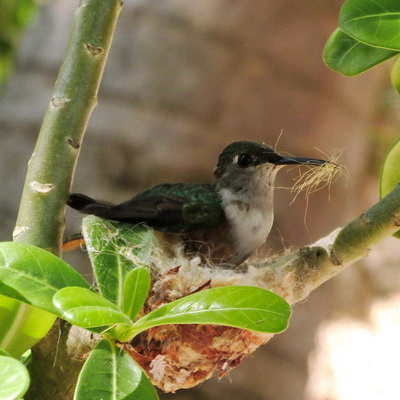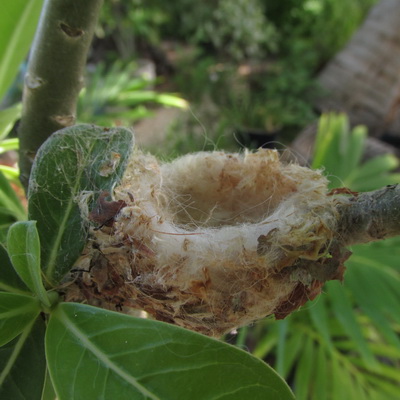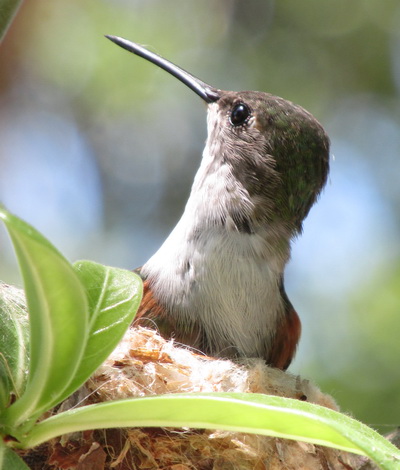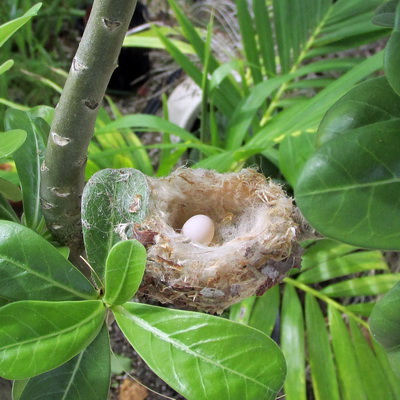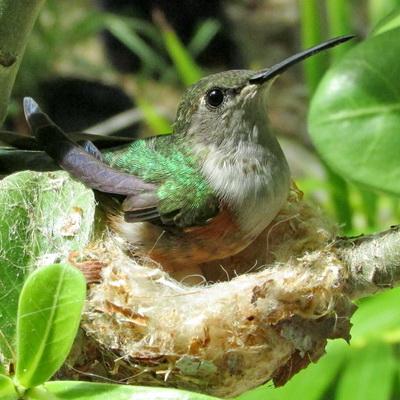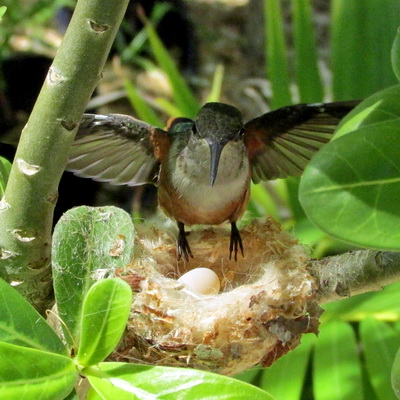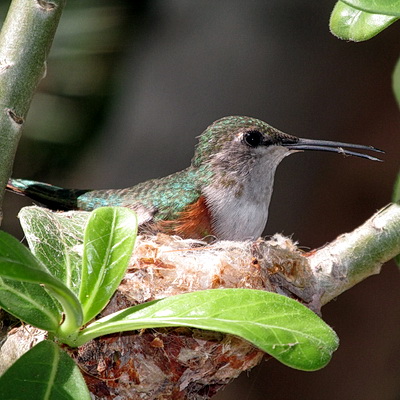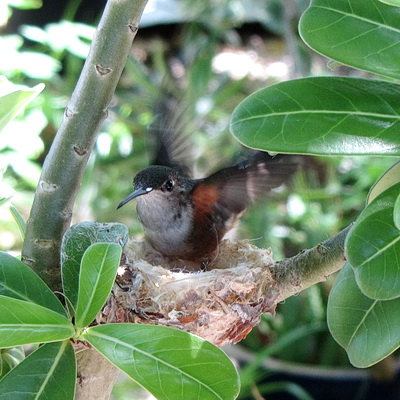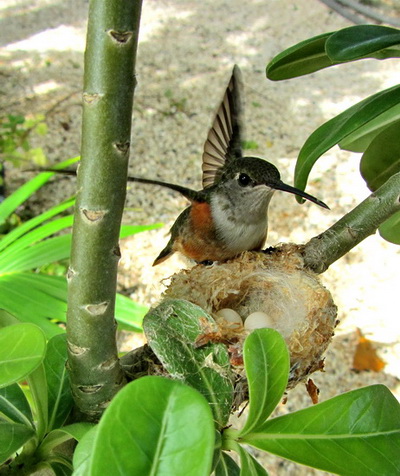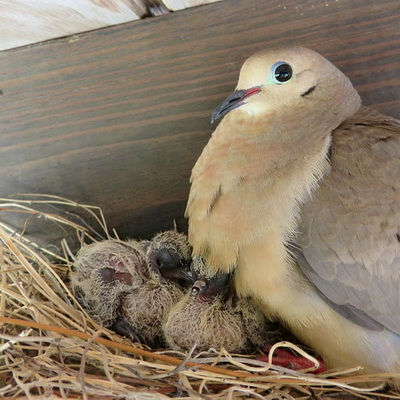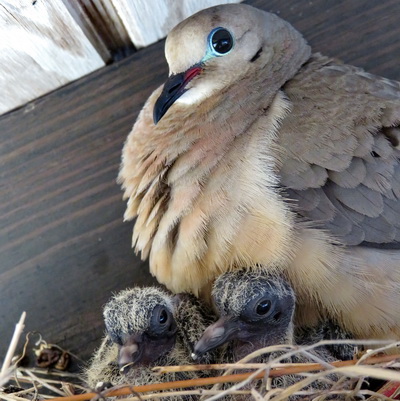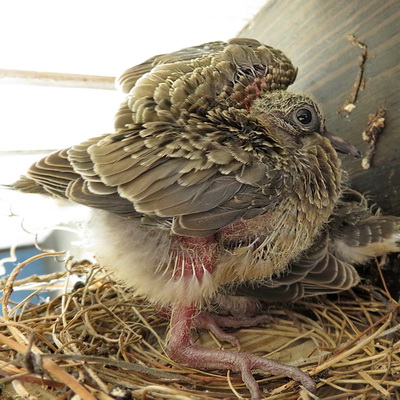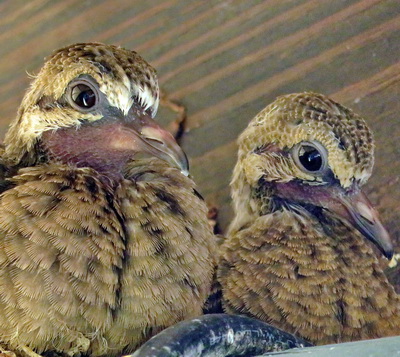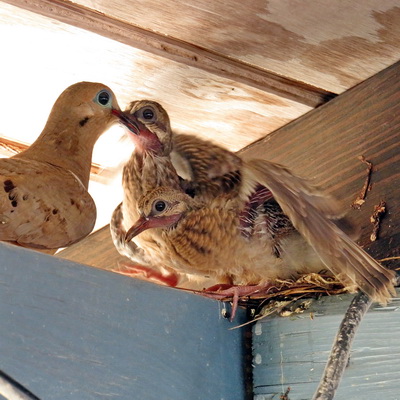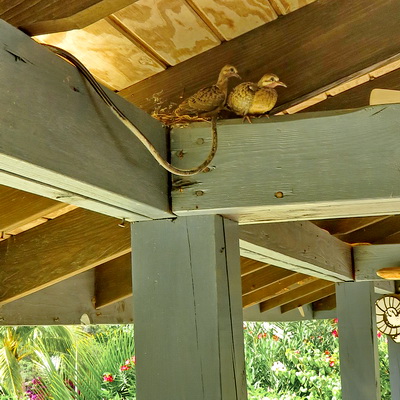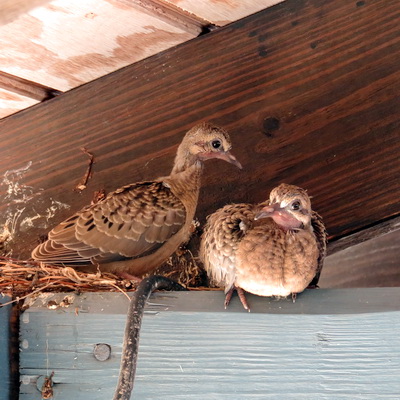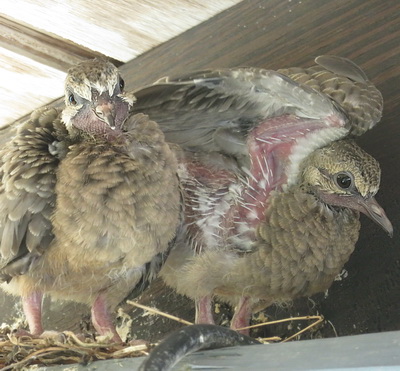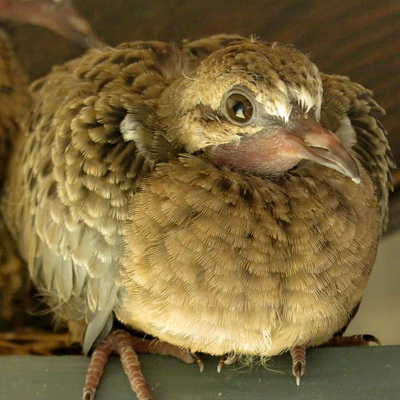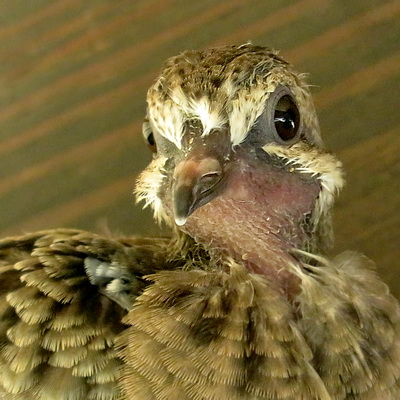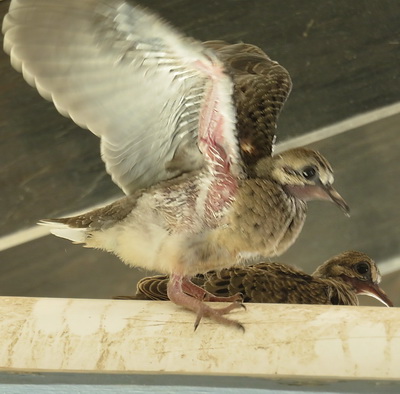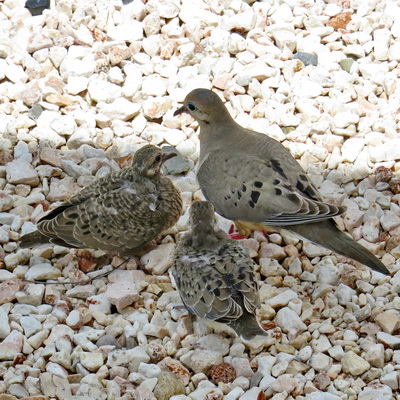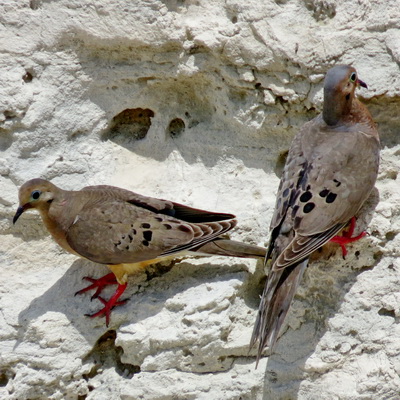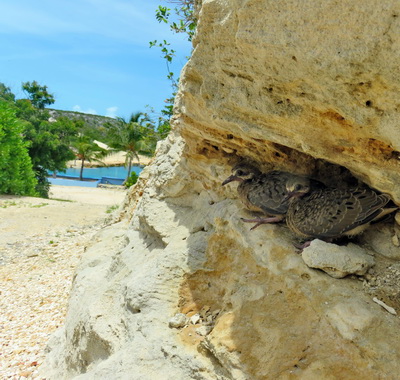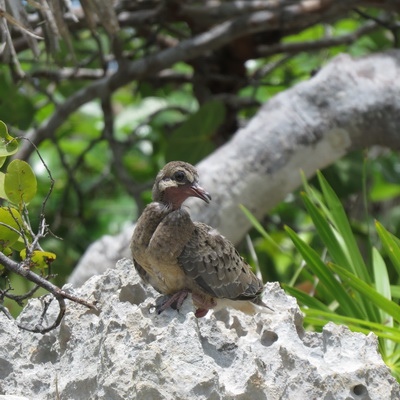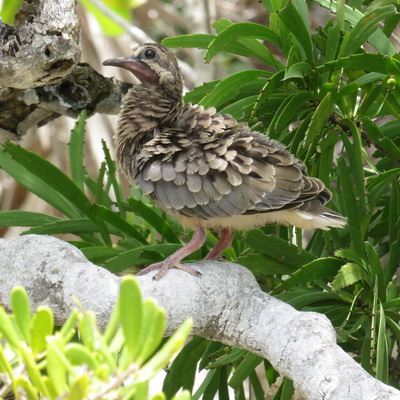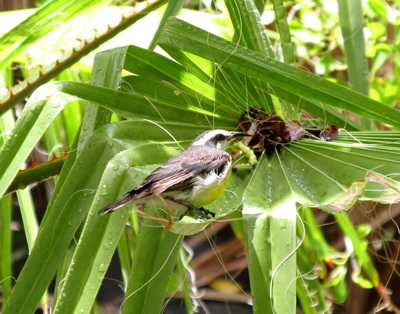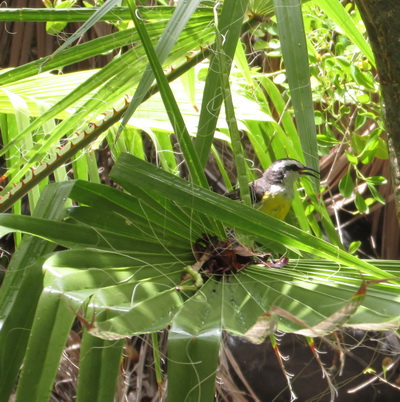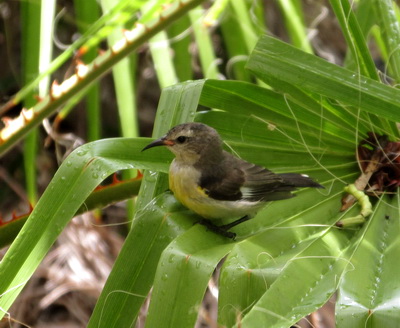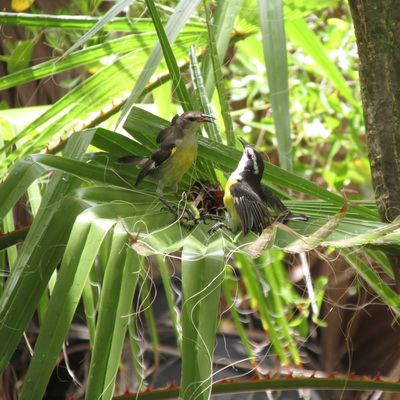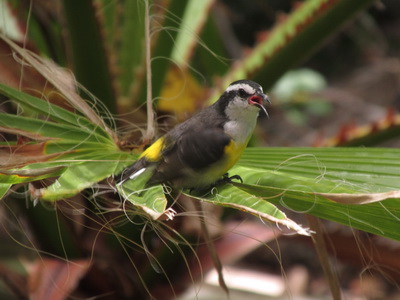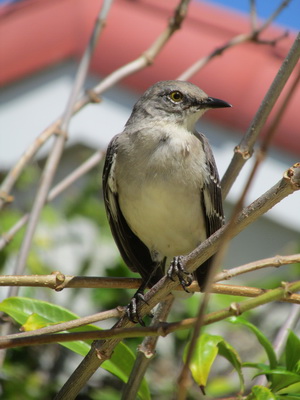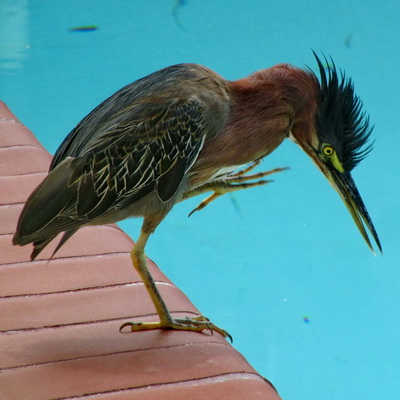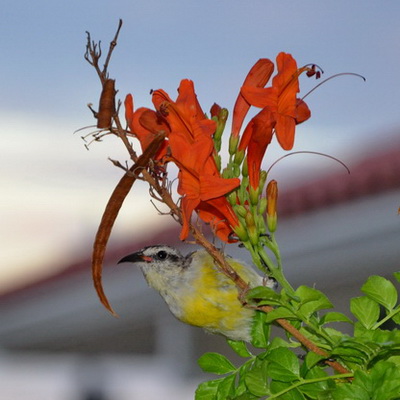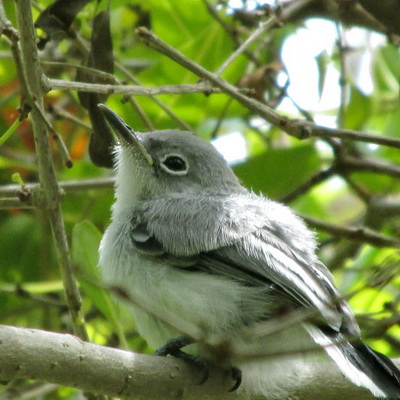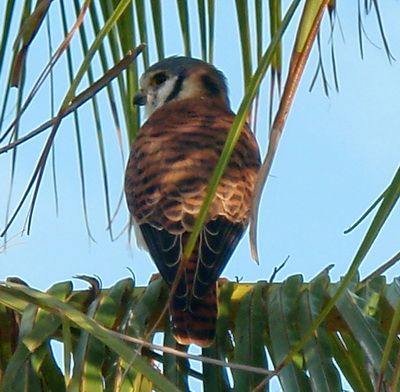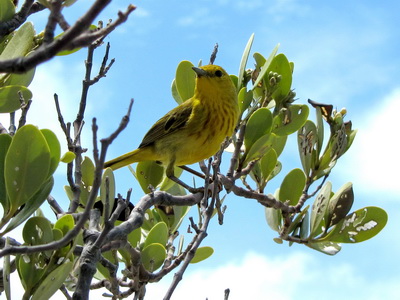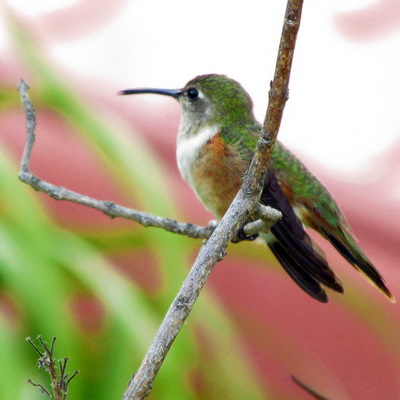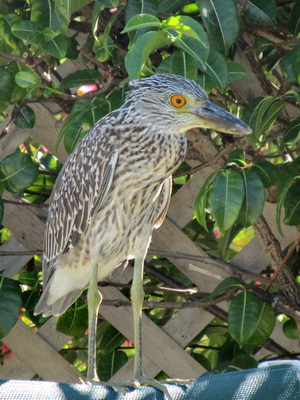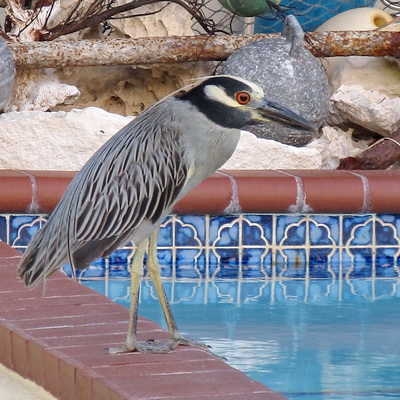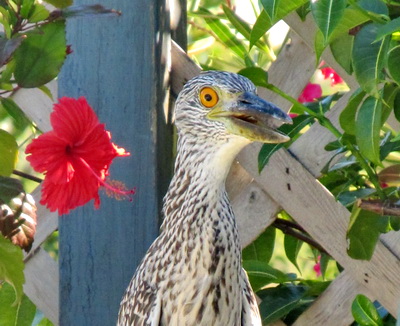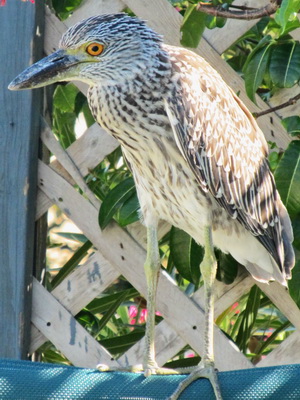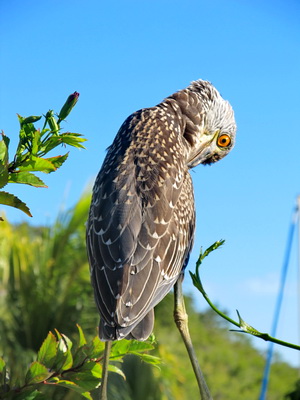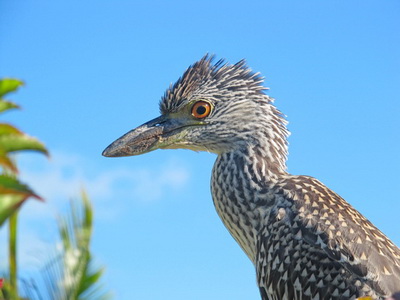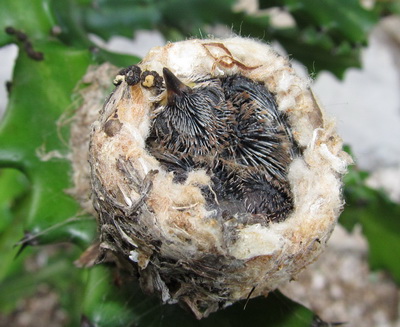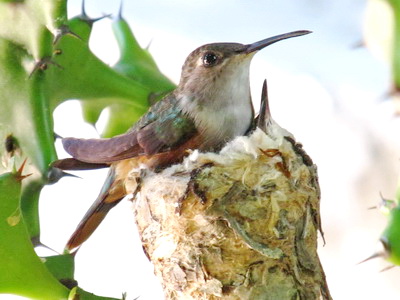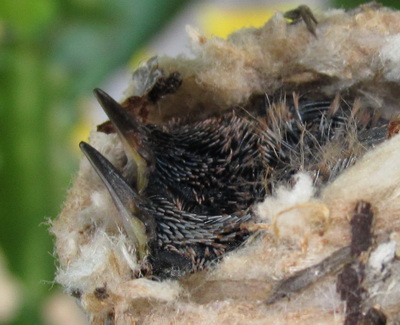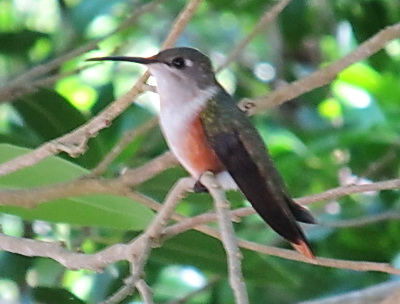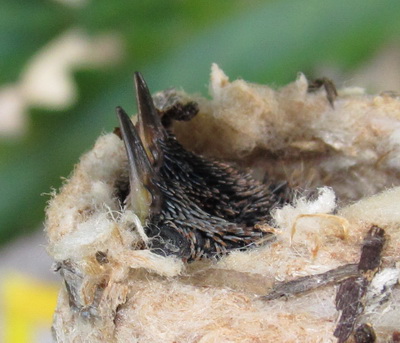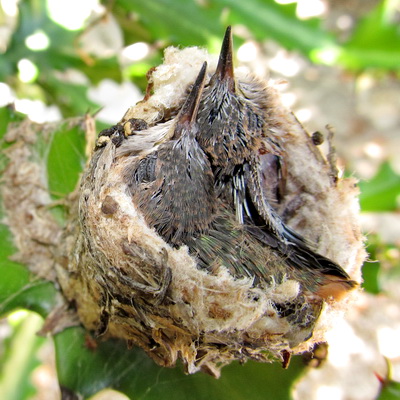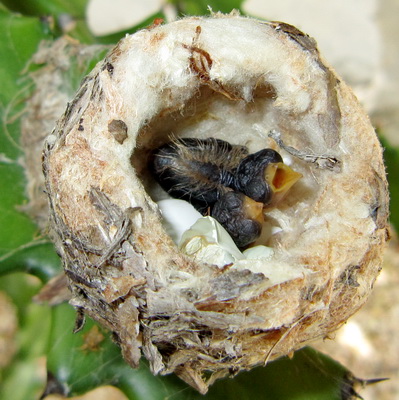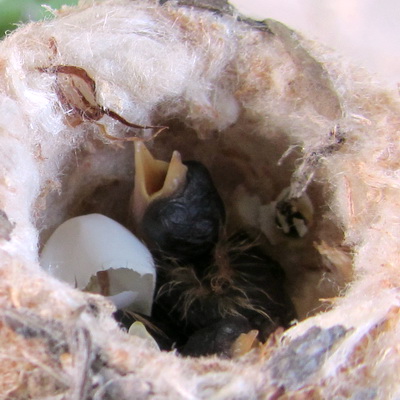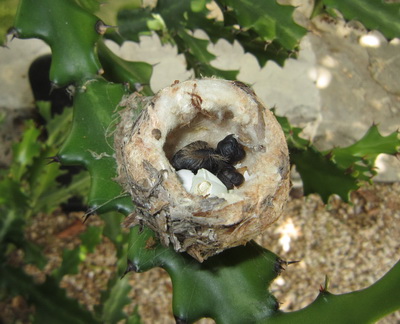Two weeks ago, I noticed a hummingbird flying around a Desert Rose that I had growing in a pot at our villas at Harbour Club Villas and Marina. I noticed something on a branch and on looking closer discovered the start of a nest. She was a busy little bird flying to and fro gathering bits of bark, spiders nests, fibers and the hairs from the Old Man Cactus. An amazing piece of work!
Hummingbirds bring little bits of fluff, bark, fibers back to the nest a little at a time and it’s glued all together with spider webs. The nest will stretch because of the spiders webs as the babies grow. The photo above shows her with webs over her beak and body as she tries to pack it all down. The hummingbird will camouflage the nest as much as she can by using small sticks, bark and plant pieces for the darker outside of the nest. The parts of the nest that may catch the sun are done with lighter materials while the darker parts of the nest are in the shade and blend in with the surroundings.

She uses her wings and presses the nest against her body so that she can get the perfect shape and rounds off the center.

The nest is pointed towards the bottom join in the branch and you can clearly see the bits of plant materials used.

She continues building the nest and doesn’t start incubating the eggs until she lays the second one.
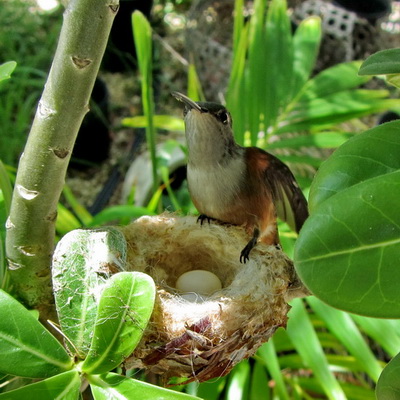
Usually the Momma hummingbird works on her nest for about four hours per day with many, many trips to gather materials as well as feed. She can make as many as 40 trips in a day.

She will sit on the nest incubating the two little jelly bean sized eggs for approximately 16-18 days before they hatch.
And so, she’s sitting on the eggs probably until the end of September when hopefully I’ll be able to post more photos of the eggs hatching and baby hummingbirds in the nest. I can’t wait. Make sure to check back in to see the babies. Marta http://www.harbourclubvillas.com


